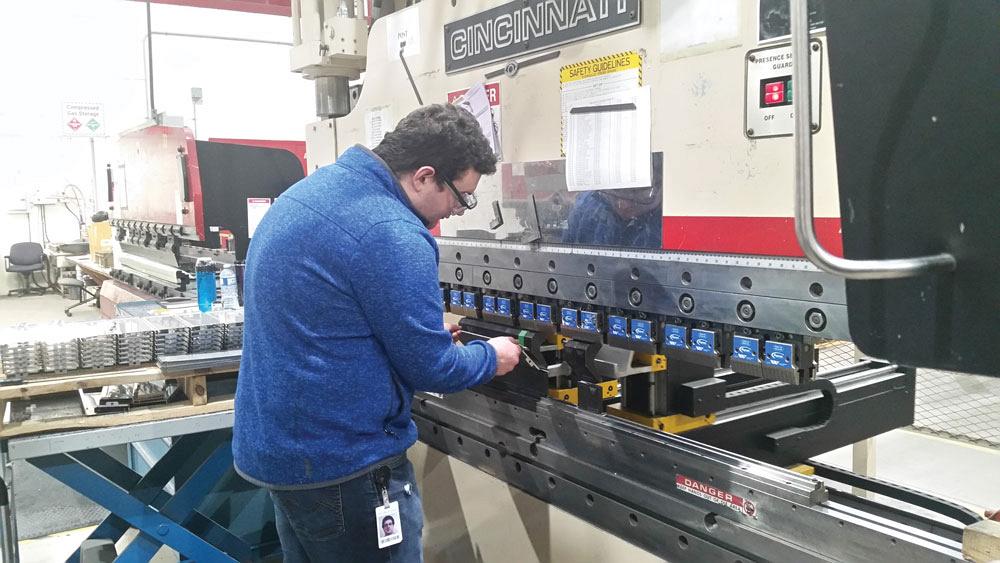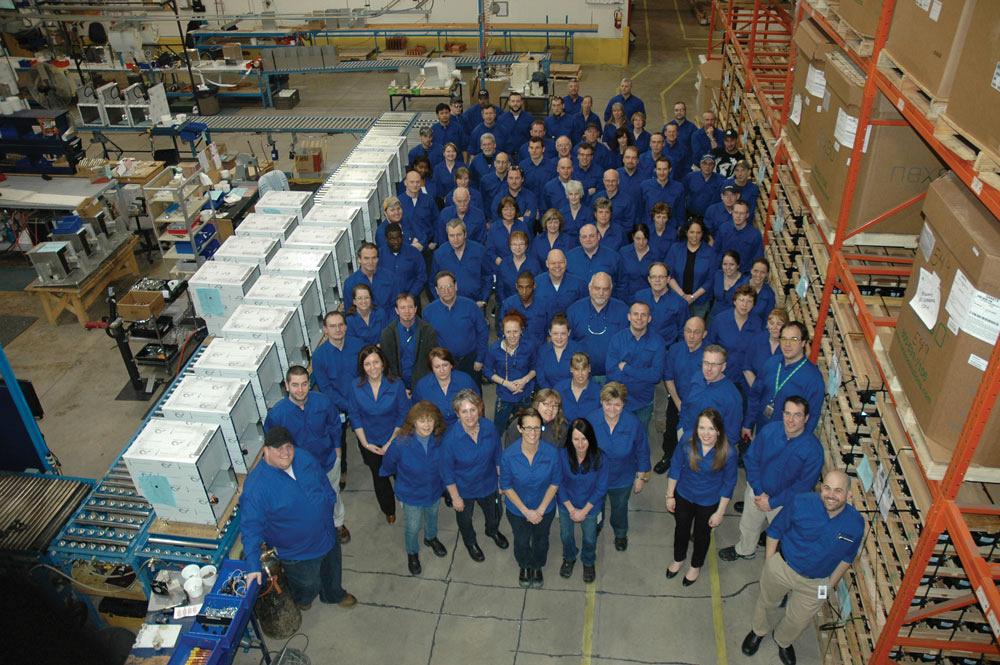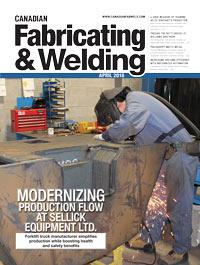Editor
- FMA
- The Fabricator
- FABTECH
- Canadian Metalworking
A good measure of training helps SureShot’s production
Nova Scotia manufacturer benefits from intensive training for its press brake operators
- By Rob Colman
- April 19, 2018
- Article
- Fabricating
There has been much talk in recent years of the skills gap fabricators are experiencing in their shops. It has become more difficult to find fitters and suitably trained press brake operators.
Partly in response to this skills gap, machine builders have developed more and more sophisticated technology that doesn’t require the same level of skill to operate. Yet even when operators are using the most sophisticated of press brakes, knowledge counts.
Kelby Ernst, team leader in the metal fabrication department at SureShot Solutions, understands this only too well. As SureShot invests in making its product lines more streamlined and its production processes more efficient, Kelby invested in a week of training for his team to ensure that they understood how best to run the shop’s press brakes.
MRP Benefits
SureShot Solutions is a Lower Sackville, N.S.-based manufacturer of portion-controlled dispensing equipment; when you order your double-double at your favourite coffee shop, it may well be a SureShot product that portions the milk and sugar. The company has a number of product lines, and it’s constantly working with its customers on concepts for other dispensing needs or configurations. The shop mostly work in 24 to 12 gauge stainless steel.
A customer order usually consists of multiple products – sugar dispensers, milk dispensers, and other product models. Each order generally is for a minimum of 80 units of each model. This product mix means that the shop is producing low volumes of multiple parts.
“In 2000 we invested in a material requirements planning (MRP) system that helps us manage our work flow,” said Ernst. “It used to be that we would have to break down what we needed to produce for a dispenser assembly on paper, whereas now the MRP system simply tells us what parts need to be produced for a particular run.”
It also used to be the case that Ernst’s fabrication team cut and kitted the parts themselves, whereas now all parts go to a kitting area where specifically trained employees kit them for welding and assembly. Now trained fabricators aren’t losing time on work that isn’t adding value in their shop.
The MRP system has been a work-in-progress over the past five years, but the changes it brought have gradually demonstrated its worth.
“We are finally at a stage now where in the metal shop I really don’t have to think about orders anymore unless management says that we’re short a part because somehow the system didn’t pick it up,” said Ernst. “We’ve gone from doing an average of about 4,000 parts a week to being capable of running 10,000 parts a week easily without any overtime. We did a couple runs last year where we did 15,000 in a week. That was just from being better organized and using equipment better.”

SureShot maintains a busy fabricating shop, so ensuring that newer operators had the same understanding of bend allowances and other press brake terminology as the more experienced operators was very important to team lead Kelby Ernst.
Ernst has pushed his team to organize themselves so that fewer changeovers are necessary on a press brake during a shift, for instance.
Design Adjustment Opportunities
These efficiency gains have allowed Ernst to put his skills to work elsewhere. For instance, he is more involved in design discussions than previously.
“We receive ‘requests for production assistance,’ or RPAs, quite often now,” said Ernst. “The engineering group will design something and then give it to us to look at and consider how we might make changes to make it simpler to manufacture. We generally give them a sense of how long it would take to produce as-is and then suggest ways in which we can speed the process up. That collaboration has resulted in three new products coming out that are superstreamlined—so much so that we are looking at getting rid of our wing [panel] bender because we won’t need it anymore.”
Ernst is now getting involved in reviewing all the company’s older product models to determine if more savings can be gained by reducing the number of different materials used in manufacturing, for instance.
Press Brake Improvements
Communication has improved throughout the company, but Ernst knew that there was one area where his team’s knowledge base had to improve – on the shop’s press brakes.
“We had some turnover in our metal shop in the past two years,” said Ernst. “I started revamping the way we did things at that time because the shop was falling behind on orders. We went through a transition, and new people were brought on who didn’t necessarily have the all of the skills required. We had some in-house training, which was fine, but I knew they needed to know more about metal fabrication. They could do what they knew but they didn’t know how to take any new jobs on.”
To fill this gap, Ernst contacted the Fabricators & Manufacturers Association (FMA) about its Precision Press Brake Certificate Course. This is usually an intensive two-day seminar to teach operators the theory and math fundamentals behind the machine to uncover the secrets to working with press brakes. It teaches the principles behind quality sheet metal bending through interactive instruction and sample work problems throughout the course.
Ernst talked through his needs with the FMA trainer ahead of time.

An example of one of the product lines that SureShot designs and fabricates. The company is going through a process of reviewing its designs to create efficiencies in production.
“I wanted my team to understand the basic terminology on the job, to understand why and how things are happening with the metal when you’re in a bend, and how to make changes as necessary,” said Ernst. “That was where we started from and the trainer, Steve Benson, adapted as he saw fit when he got here and got to know the team.”
The training was a full week at SureShot and eight team members took part.
“It started right from the ground up with a discussion of materials and what tensile strength is,” said Ernst. “Then on the final day we came downstairs to measure bends on the machine, and to see how if you change one setting, that is going to affect something else. Taking a course like this isn’t like taking a fabrication course for a year, but it’s amazing how many of our guys had an aha! moment during the course. For instance, I remember one of our team being surprised to learn how grain direction can affect bends.”
Ernst spoke a great deal about wanting his team to understand bend allowances and the measurements they should make if they need to produce a part on-the-fly.
He felt the training was a success.
“Even the people who didn’t pass the exam at the end of the week said they’d learned something,” he said. “Some of those people were really green in the job, but they took what they could from it. And sometimes a course like that can just remind experienced operators of some of their bad habits, and what they should be doing instead.”
The proof was in production, however. For the 10 weeks after the training took place, SureShot’s good part rate increased from 90 per cent to around 97 per cent.
“We also now put together a statistical process control [SPC] sheet and run that every time we get a new part on one of our press brakes,” said Ernst. With a little knowledge came a new dedication to process management.
Knowledge Is Efficient
SureShot is in the process of making a variety of changes to the equipment in its fabricating shop. Ernst said that they are close to purchasing new press brakes and perhaps new operating software for their punch press, laser, and brakes, and more investments are in the pipeline. While all this investment will inevitably create efficiencies on their own, Ernst still feels more knowledgeable operators will always be important.
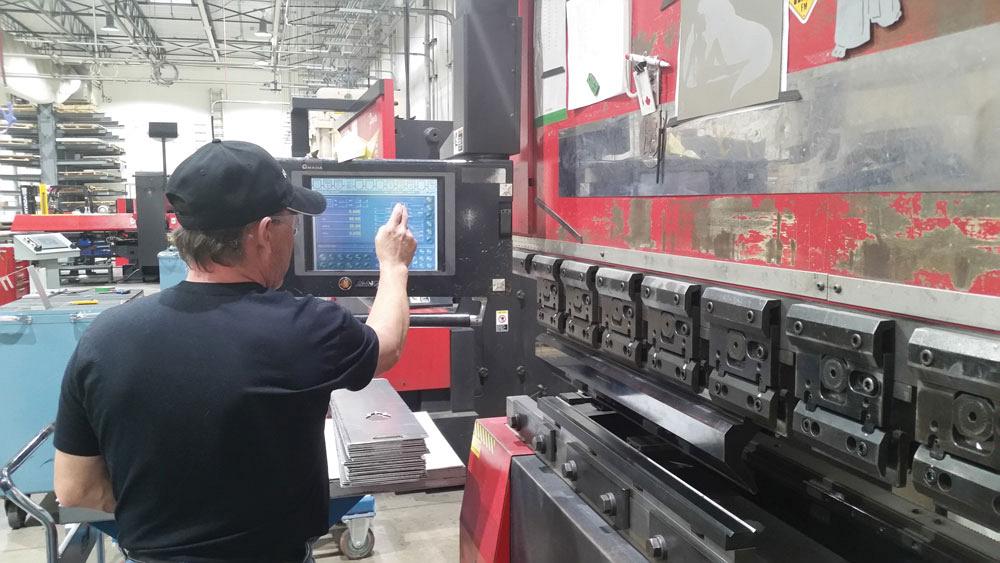
“Your software can be as sophisticated as you want, but when there’s a problem and I’m doing what it’s telling me to but I’m not getting the result I need, then having that training makes a difference,” said team leader Kelby Ernst.
“Your software can be as sophisticated as you want, but when there’s a problem and I’m doing what it’s telling me to but I’m not getting the result I need, then having that training makes a difference,” he explained. “If you don’t know what you’re looking at when a problem happens, it drags the process out. Sometimes if the operator understands the problem, he can fix it. And if he can’t, he can at least explain it to someone who can. Software is software. It has bugs. An operator is going to make a lot of scrap parts if they don’t know how to deal with it.”
Editor Robert Colman can be reached at rcolman@canadianfabweld.com.
SureShot Solutions, www.sureshotsolutions.comAbout the Author

Rob Colman
1154 Warden Avenue
Toronto, M1R 0A1 Canada
905-235-0471
Robert Colman has worked as a writer and editor for more than 25 years, covering the needs of a variety of trades. He has been dedicated to the metalworking industry for the past 13 years, serving as editor for Metalworking Production & Purchasing (MP&P) and, since January 2016, the editor of Canadian Fabricating & Welding. He graduated with a B.A. degree from McGill University and a Master’s degree from UBC.
subscribe now


Keep up to date with the latest news, events, and technology for all things metal from our pair of monthly magazines written specifically for Canadian manufacturers!
Start Your Free Subscription- Trending Articles
CWB Group launches full-cycle assessment and training program

Achieving success with mechanized plasma cutting

3D laser tube cutting system available in 3, 4, or 5 kW

Brushless copper tubing cutter adjusts to ODs up to 2-1/8 in.

Welding system features four advanced MIG/MAG WeldModes
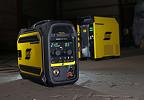
- Industry Events
MME Winnipeg
- April 30, 2024
- Winnipeg, ON Canada
CTMA Economic Uncertainty: Helping You Navigate Windsor Seminar
- April 30, 2024
- Windsor, ON Canada
CTMA Economic Uncertainty: Helping You Navigate Kitchener Seminar
- May 2, 2024
- Kitchener, ON Canada
Automate 2024
- May 6 - 9, 2024
- Chicago, IL
ANCA Open House
- May 7 - 8, 2024
- Wixom, MI













